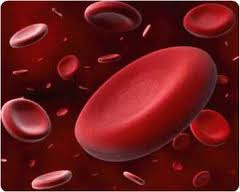It’s Saturday morning and a perfect time for blogging. Life has settled down quite a bit here over the past few days. Life has been nothing but complete chaos and stress since about November and despite the fact that I think I have handled the stress fairly well, I am praying for no more crises for at least the next few months. The rest of the year would be nice too!
I have been playing catch up this past week with a lot of things I have neglected as of late, namely wedding planning, housework, and agent hunting for my book. More importantly, I have been trying to catch up with those friends and family that I have been neglecting and I am slowly but surely accomplishing that. I also have a list of health related blog topics in my head that I really want to write about as there has been so much going on and I think that the experiences I have been having might be useful for people to read about.
I think today I am going to start with an update about how I am doing with taking low dose naltrexone (LDN). I have been getting e-mails from people asking me if the LDN is working, if I am having any side effects, etc. The first post I wrote about LDN you can find here: Low Dose Naltrexone. If you have an autoimmune disorder, I think the post is worth a read. LDN is also being used for other illnesses other than autoimmune diseases but I try to write about what I know based on my experience and that experience is with taking LDN for Sjogren’s syndrome.
When I wrote the first blog entry about LDN, I was five weeks into taking it. Now I am about ten weeks into it. Since the five week point, I have been able to completely finish weaning off of prednisone. This was no small feat mind you. I had been taking prednisone for about fifteen continuous months, with the exception of one month where I had weaned off and had to go back on it. I did have some difficulty coming off the prednisone and the withdrawal symptoms were tough for the first two weeks or so, but my body seems to be slowly adjusting.
Before I came off the prednisone, and while on LDN, there was a period of about three weeks where I was feeling amazing. I mean, AMAZING! I went into my rheumatologist’s office for a routine appointment and told her that I had not felt that way since before all this autoimmune fiasco began, which was five years ago. Can you imagine feeling like yourself for the first time in five years?!? It was incredible.
However of course that did change when I stopped the prednisone but I am trying to be patient and give my body the time it needs to adjust. Part of thinks that it would have been nice to not have messed with the prednisone and enjoyed feeling good for a while longer. However the other part of me felt stronger that I did not want to be dealing with prednisone withdrawals and possible flare up issues closer to my wedding, which is three months away. This weekend it will be one month I am off the prednisone and that is usually my tipping point for things to go awry so I am crossing my fingers. Speaking of awry, at this point I am only having two issues, severe itching and hair loss. I thought the issues were related to coming off prednisone or perhaps even related to an autoimmune flare starting, but it appears this is probably not the case. I will hold off on the details of that situation for now until I have more information.
Overall, I think the LDN has had a positive effect on my autoimmune symptoms. When I came off the prednisone, my migraines initially got worse but are improving with the help of a supplement I was given by my integrative medicine doctor called petadolex. I have begun to have some minimal joint pain in the mornings that quickly goes away but other than that, I seem to be holding steady in regards to my pain levels. I have managed to wean off my steroid inhaler and currently take no medications for my autoimmune related asthma. That is a big deal. I am off my prescription migraine medication, another autoimmune medication called Plaquenil, and a medication that was being used to stimulate saliva called pilocarpine. I have noticed a small improvement in my dryness symptoms. My use of pain medication and Motrin has decreased.
I am able to do short periods exercise on a regular basis and am having less painful after-effects of the exercise as compared to before LDN. With the exception of the time period after I stopped prednisone, I have noticed an improvement in my mood and anxiety levels. I have not noticed any improvement in my esophagus/swallowing issues since starting the LDN. I had a few meals where I forgot to take my Procardia, which enables me to swallow more easily, and I immediately regretted not taking the medication. The LDN also has not made a difference in my reflux issues. The debilitating fatigue that I experience improved initially but I have been struggling with my energy levels since coming off the prednisone.
The only side effect I have noticed from LDN is insomnia. It has improved over the past month to the point that I am willing to continue riding out the side effect because the benefit is worth it right now. I am experimenting with some different natural solutions to this problem and it is also worth noting that I was having some insomnia issues prior to starting LDN.
So that is the scoop. I do have to mention that in addition to starting LDN, I have also begun going for allergy shots every week and have drastically changed my diet to an autoimmune protocol of the Paleo diet. However I did not start either of these treatments until after I had that three weeks of feeling great so I do strongly believe that the LDN has been a contributing factor in some of the improvements I have experienced. I am still on 3mg and am holding off on going up to 4.5mg until my insomnia is more under control as lack of sleep is a huge trigger for autoimmune symptoms.
Am I still skeptical? Sure. The improvements I have had could be a fluke but I don’t think so. I do think it is a situation where time will tell for sure. My goal is for LDN to keep me off the steroids. If that is the only benefit I get, it will be worth it’s weight in gold.



